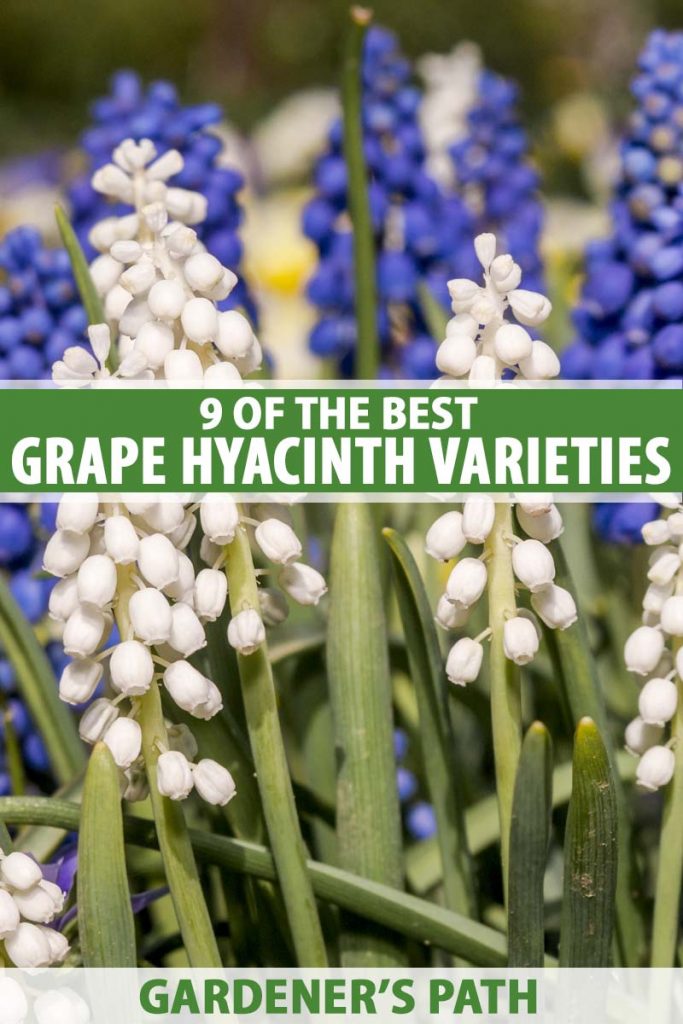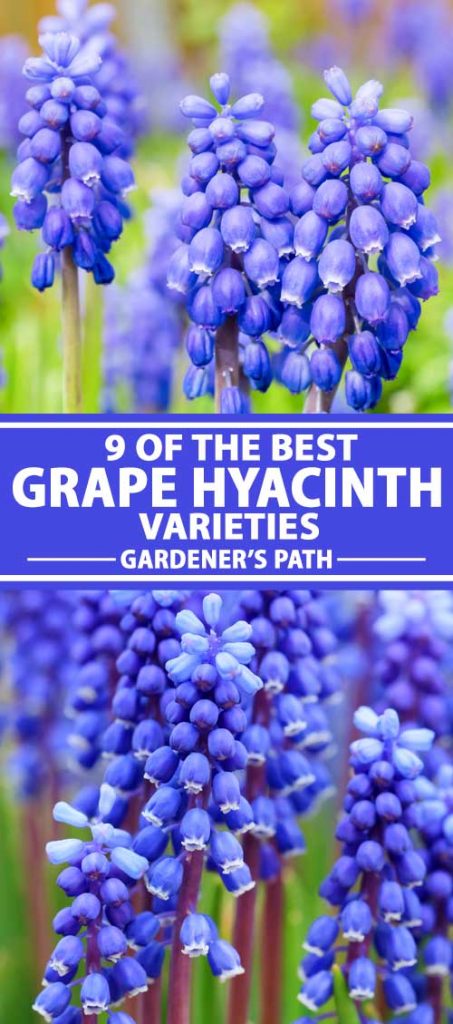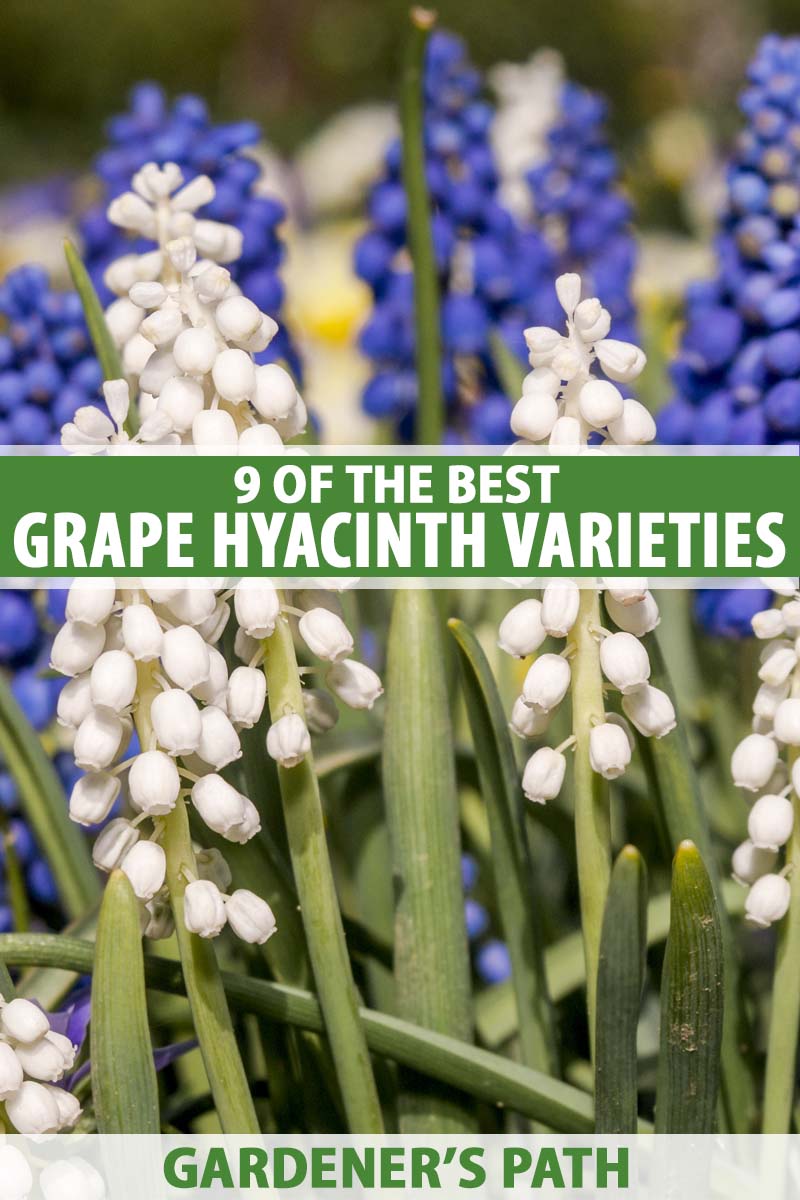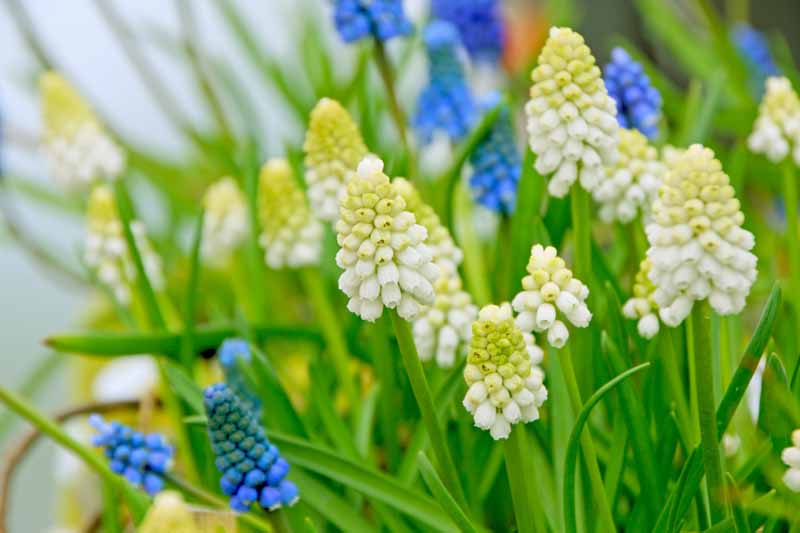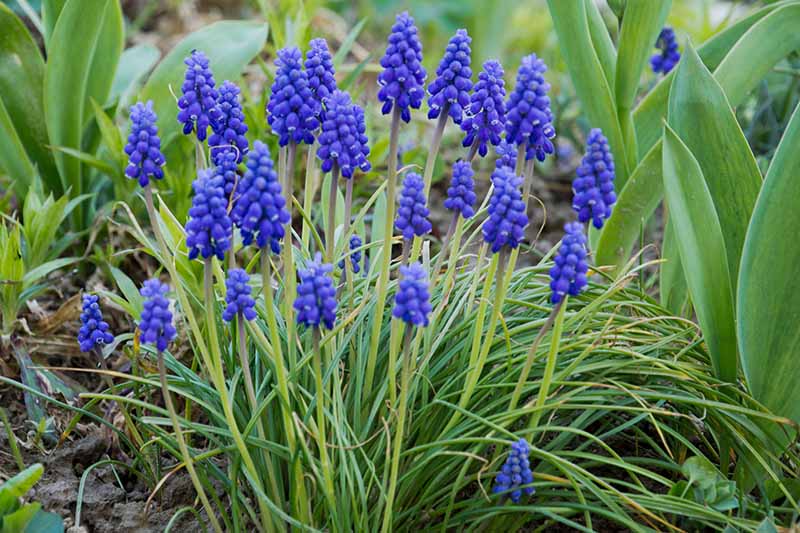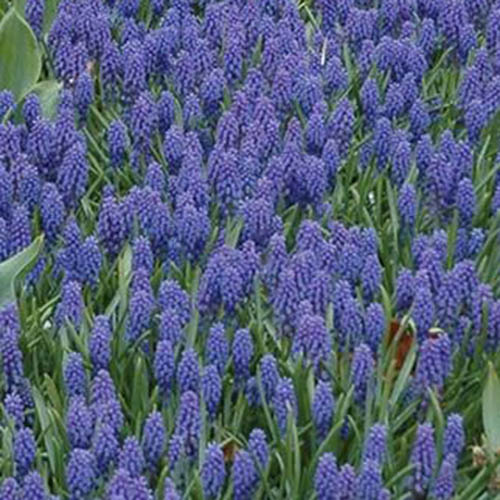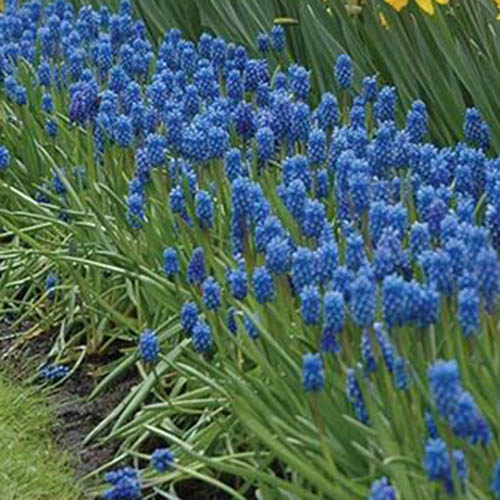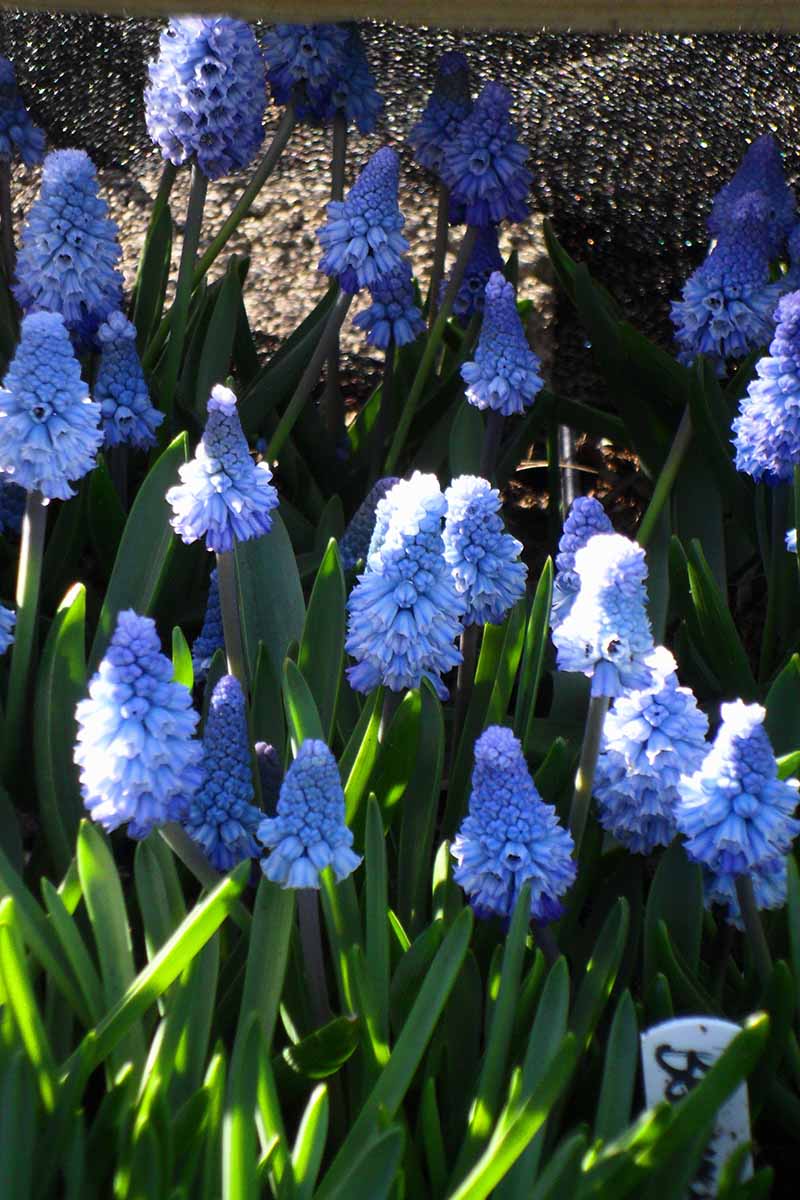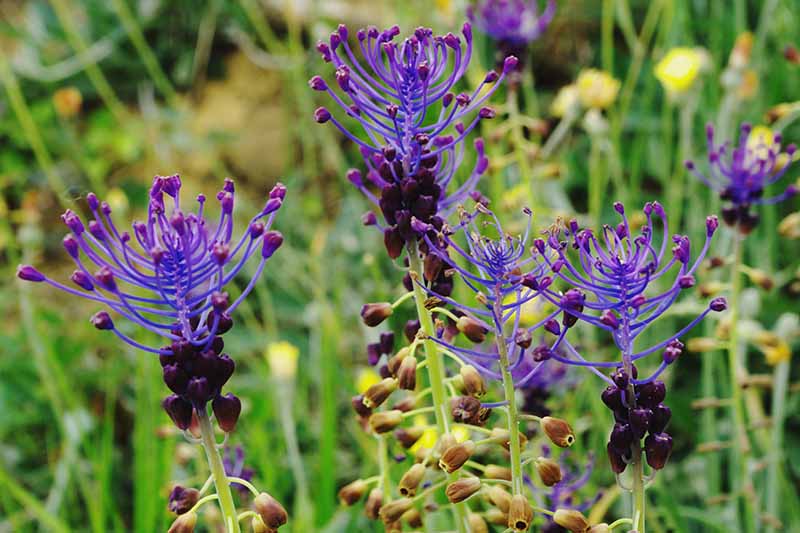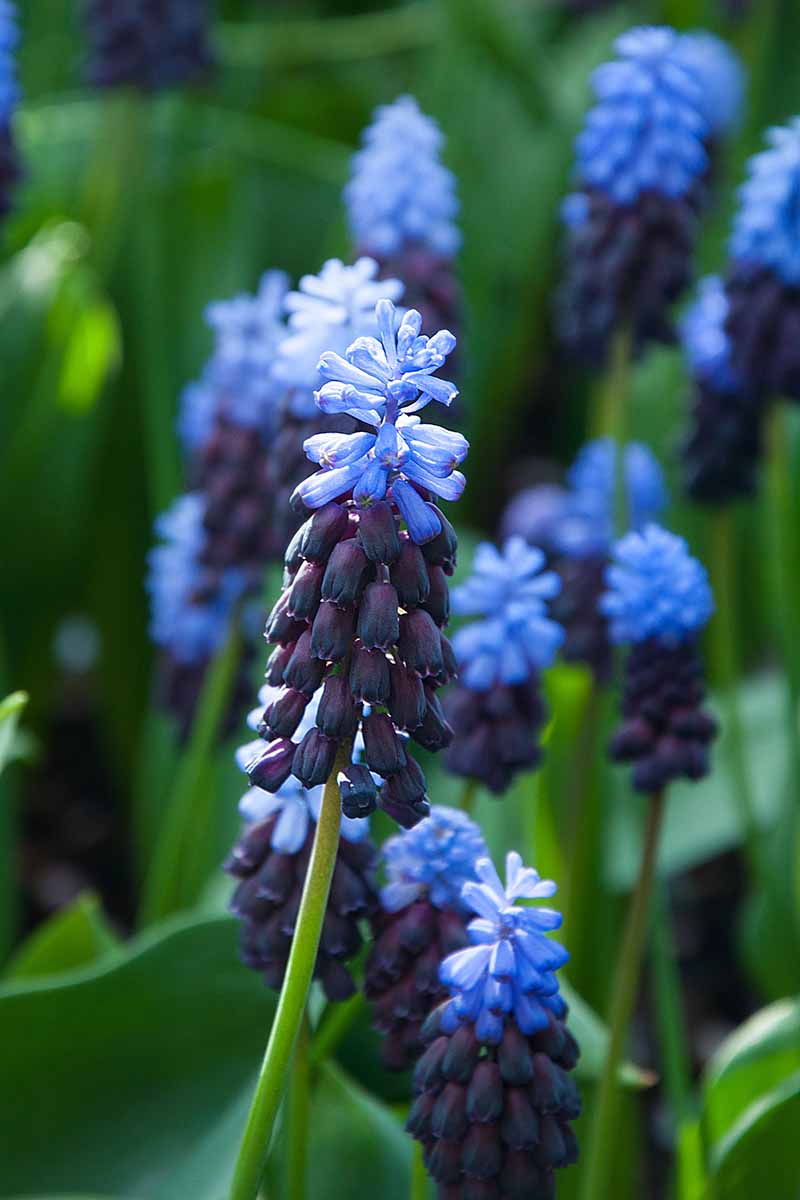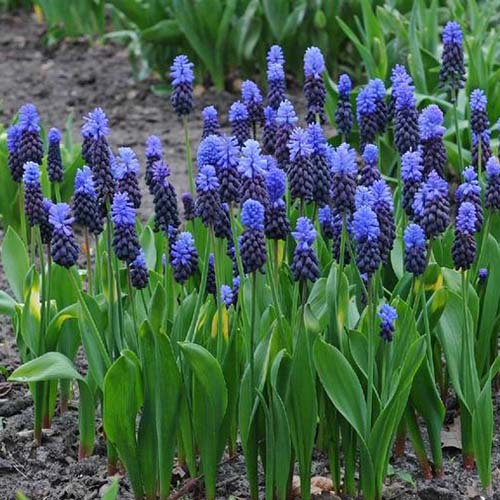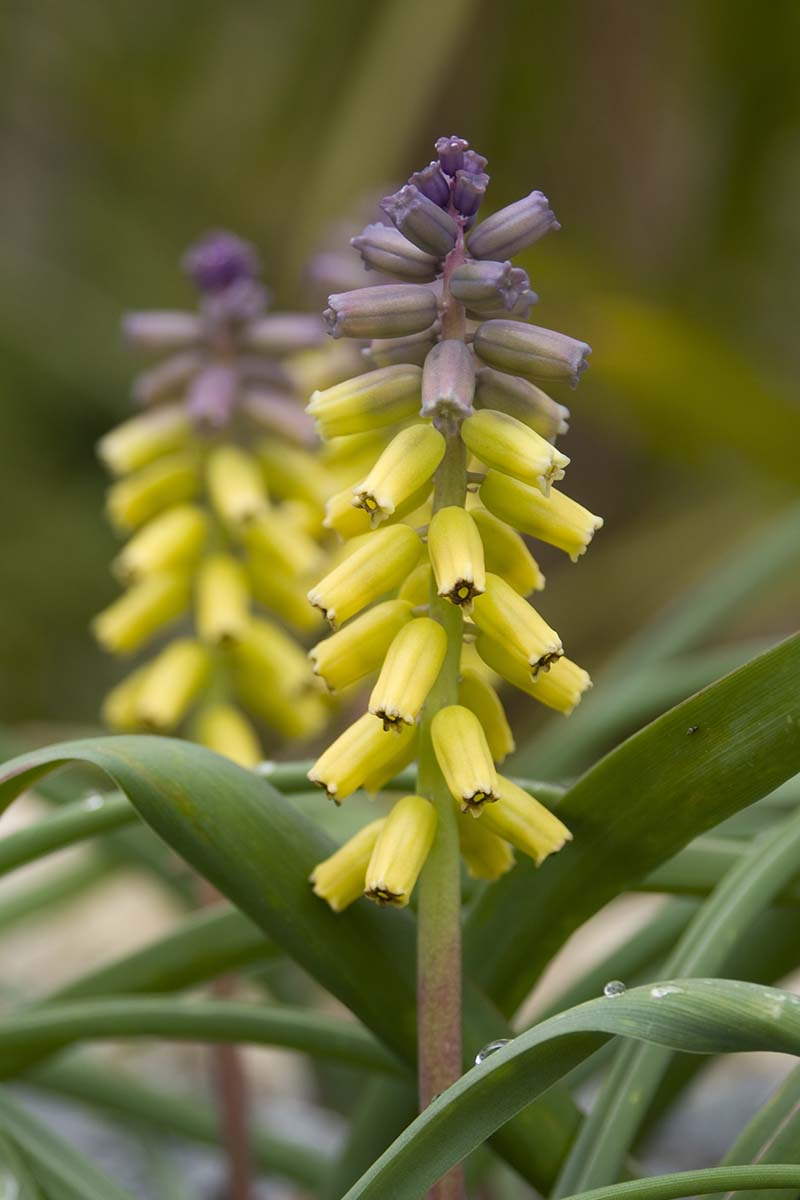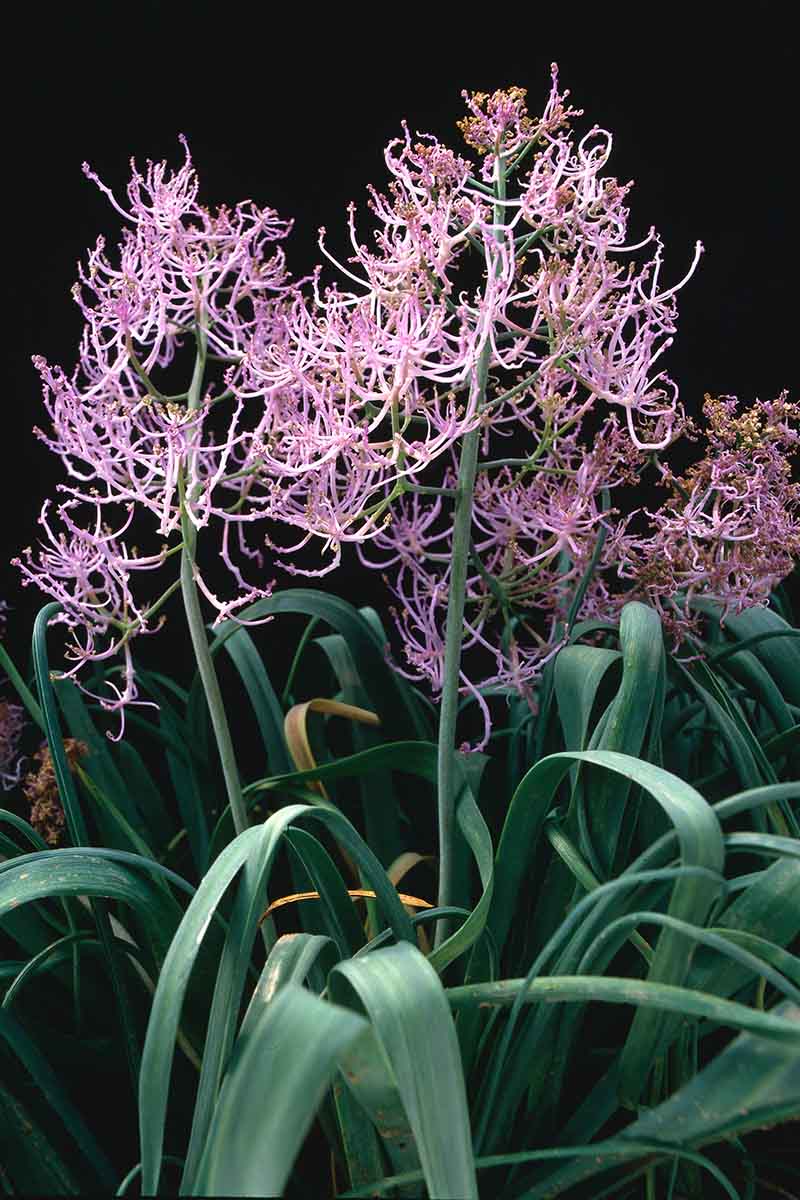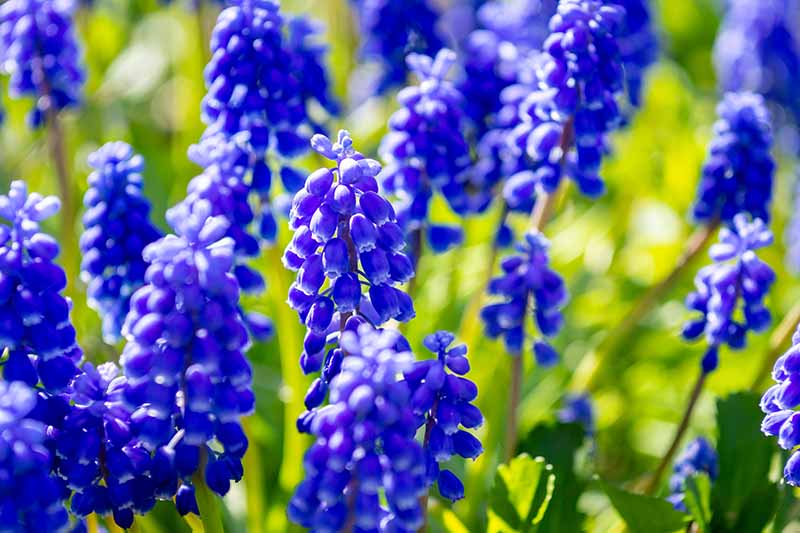A visual delight in their traditional shades of rich royal blue and violet, different species also offer pretty hues of pale blue, pink, teal, white, yellow, and bicolors. Mass planted, their effect is stunning. And they’re equally charming in beds, borders, containers, and rockeries – or scattered in lawns, woodlands, and naturalized settings. These reliable bulbs multiply quickly, adding to their impact each year. And they’re a breeze to care for, with little maintenance required. We link to vendors to help you find relevant products. If you buy from one of our links, we may earn a commission. Find out which species will work best in your garden as we take a look at our 9 favorite grape hyacinth varieties to brighten the spring landscape. But there are many others with equal charm that deserve a spot in your garden as well.
The more popular species are available in garden centers and online. But for the rarer bulbs, you may have to try specialty garden shops, bulb houses, or bulb societies. Local garden clubs, botanical gardens, and horticultural schools can also be good sources for unusual bulbs. Let’s discover 9 species of Muscari to add to your spring garden:
1. M. armeniacum
Renowned for its vigorous growth and large flowers of cobalt blue to royal purple, this variety is probably the most familiar of all species.
Hardy in Zones 4-8, the flower racemes are full and tightly packed, growing on 6- to 8-inch stems. Armenian muscari are lightly fragrant, with cultivars available in shades of blue, pink, and white. The bulbs create spectacular color drifts when mass planted in open areas or under deciduous trees, or in borders, containers, and rockeries. This is a good species to force indoors for winter blooms.
‘White Magic’ You can find bags of 25, 50, or 100 ‘White Magic’ bulbs – pure white grape hyacinths – available at Eden Brothers.
‘Blue Grape’ Or for a field of blue, you can find bags of ‘Blue Grape’ bulbs available at Burpee.
2. M. aucheri
This grape hyacinth species puts on a reliable burst of color with pretty, single, or bicolored flowers in cool shades of china or periwinkle blue and white – florets are darker on the bottom and transition to light-colored caps.
A compact species, flowers bloom atop 4- to 6-inch stems in early spring and have a fruity and slightly musky fragrance. Well-suited for large drifts, ribbon borders, containers, rockeries, or underplanting daffodils and tulips, this species is hardy in Zones 5-9.
‘Dark Eyes’ ‘Dark Eyes’ is a hybrid cross between M. aucheri, M. neglectum, and M. pallens, and is popular for its densely packed, sapphire blue flowers. Packets of 15 bulbs are available at Burpee.
3. M. azureum
Unlike other species with a cinched mouth, M. azureum is known for its delightful, fluffy florets of baby blue to white.
The densely packed racemes take on a conical shape and each floret opens like a small bell, giving a loose, flouncy look to the inflorescence. Plants bloom in early spring and have a light, grapey scent. Another compact species with 2- to 5-inch stems, it is well suited to the front of beds and borders, containers, and lawns or woodlands. M. azureum Hardy in Zones 4-8, this species is also known as Pseudomuscari azureum.
4. M. botryoides
Also known as Italian muscari, this variety is cold hardy and ruggedly robust, suitable for growing in Zones 3-9.
Tightly packed flower spikes bloom in shades of white or sapphire to indigo blue and flower in early to mid-spring. The mid-sized plants have 5- to 6-inch stems and blooms have a sweet, honey-musk fragrance. A good choice for the front of perennial flower beds, containers, and rockeries, or naturalized in lawns and woodlands.
5. M. comosum
One of the showiest species, M. comosum (syn. Leopoldia comosa), or the tassel grape hyacinth, has a very distinctive flower head and musky fragrance.
The unique inflorescence is tightly packed like other species but opens up like a candelabra, in a bright shade of neon purple with striking magenta tips. A tall varietal with 8- to 12-inch stems, it blooms in late spring. Hardy in Zones 4-8, tassel muscari should be cultivated where their pretty flowers can be fully enjoyed – in beds, borders, or containers, and skirting pathways.
6. M. latifolium
The tall flowers of this grape hyacinth variety are notable for their eye-catching, bicolored blooms of inky-blue lower florets that transition to china blue or white caps.
The flower racemes have a conical shape rather than the typical pyramid, but the species is named for its broad leaves that resemble those of a tulip. Stems grow up to 12 inches tall and flowers bloom in early spring.
M. latifolium Hardy in Zones 3-8, they are striking as an underplanting for daffodils and tulips, containers, or for early color in perennial beds. You can find bulbs in packets of 25, 50, and 100 available at Eden Brothers.
7. M. macrocarpum
Another distinctive, bicolor grape hyacinth flower that first appears as a dusty purple, then turns to yellow as the bloom opens.
With a pleasant fruity fragrance, the large, fleshy bulbs make a good choice for beds, containers, and for forcing blooms indoors. Flowers grow atop 6-inch stems and plants are hardy in Zones 5-8.
8. M. plumosum
Also known as feather muscari, this one has earned the wonderful nickname “lunatic flower” for its madcap clouds of blooms in shades of bright pink to amethyst – these showy flowers are nothing like their tightly bound cousins.
Feather muscari blooms on 8- to 12-inch stems in mid- to late spring and has a subtle, sweetly musky fragrance. The quirky plumes make a spectacular addition to beds, borders, containers, rockeries, and along path edges. Plants are hardy in Zones 4-8. M. plumosum
9. M. paradoxum
The flower heads of M. paradoxum give a mesmerizing display of jewel-like colors. The closed florets start out teal green and change to an inky purple as they open. A contrasting yellow margin and tiny yellow stamens add more intriguing detail.
A large species, plants send up grass-like foliage in early spring and flowers bloom atop 12-inch stems in mid-spring. Highly fragrant, these flowers add impact when cultivated in repetitive groups or waves. Use as an underplanting with white tulips or small narcissi for dramatic effect. Hardy in Zones 4-8, you may also see these listed at nurseries as Bellevalia paradoxa.
Reliable Color for Every Garden
For those who like their gardening easy, with reliable color and perfume from low maintenance plants, one or several species of muscari are sure to please. If you’re new to growing these spring beauties, be sure to check out our guide to growing grape hyacinths. Striking when mass planted, be sure to plant some in containers and beside pathways where these delightful little gems can be fully appreciated.
Do you already have grape hyacinths growing in your garden? Which of these varieties will you add next? Let us know in the comments, and post a photo! For more flowers to add color to your spring landscape, you’ll need these guides next:
11 of the Best Crocus Varieties for Your Garden Delightful Daffodils, a Springtime Must-Have How to Grow Heavenly Hyacinths for Rich Spring Color and Sweet Perfume
